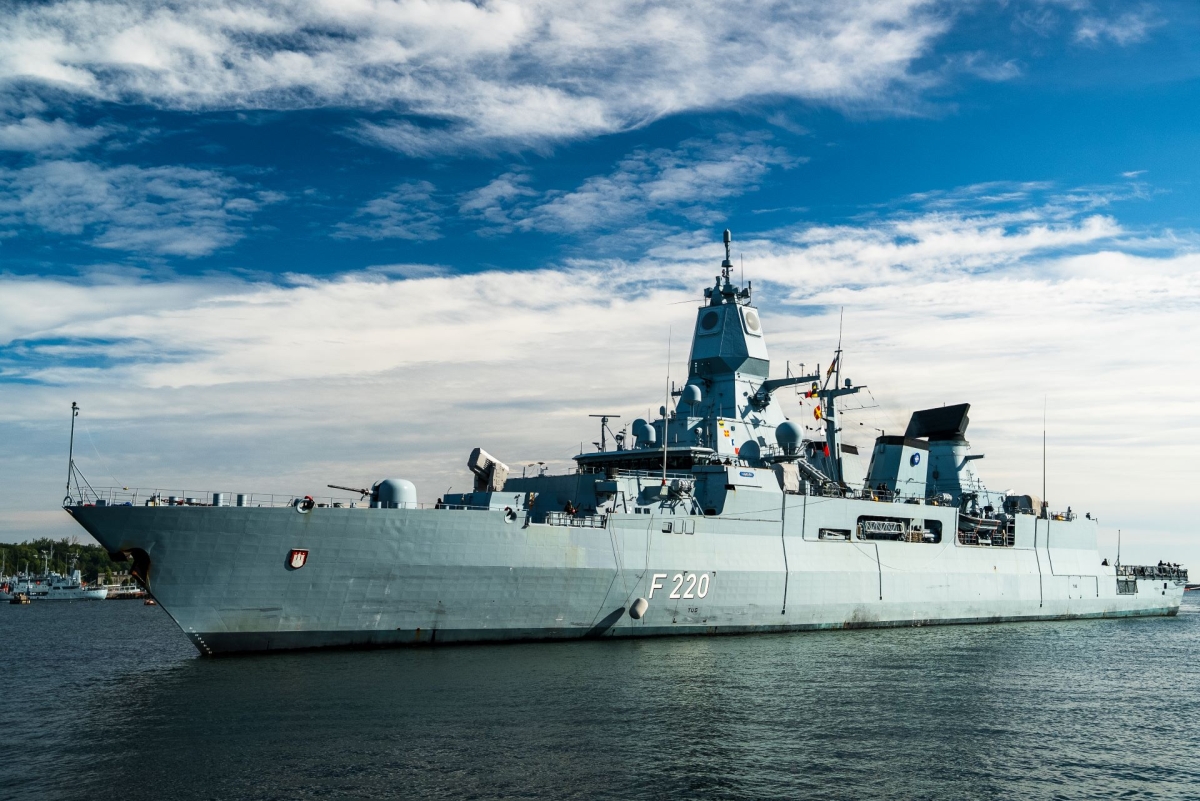
On the morning of September 15, two NATO naval vessels entered the port of Gdynia. They were, respectively, the American Arleigh Burke-class destroyer USS Bulkeley (DDG-84) and the German Brandenburg-class frigate FGS Hamburg (F220). Their scheduled stay will allow the ships to prepare for further operations, underscoring international commitment to security in the Baltic Sea and on NATO’s eastern flank.
The visit will be used to replenish supplies and remove waste from both ships. It will also provide rest for the crews. USS Bulkeley moored at the French Quay and will remain until September 16, after which it will set out again on its Baltic mission. FGS Hamburg will stay longer, until September 19, at the Indian Quay.
Port calls by ships from other nations are nothing new in Poland, but since Russia’s aggression against Ukraine in February 2022, their frequency has clearly increased. This is especially visible during international exercises held in the Baltic Sea. Furthermore, since 2024, the operation codenamed “Baltic Sentry” has been underway, aimed at protecting maritime infrastructure—surface, underwater, and coastal—in the face of threats of damage, as demonstrated by several high-profile incidents involving suspected sabotage of pipelines and fiber-optic cables. The significant activation of NATO naval forces is also linked to last week’s start of the first Belarusian-Russian exercises since 2021, codenamed “Zapad 2025”, which also include scenarios in the Baltic and Barents Seas.
USS Bulkeley (DDG-84) has been in service since 2001. It belongs to the large Arleigh Burke-class destroyer series, developed since the late 1980s, which form the backbone of the US Navy, carrying out numerous key missions—for example, as part of aircraft carrier strike groups. Many of them have visited Polish ports, some on multiple occasions. Recently, the ship took part in securing maritime routes in the Red Sea and Gulf of Aden, eliminating threats from unmanned surface and underwater vehicles as well as missiles launched by Yemen’s Houthi fighters, who targeted commercial vessels and occasionally warships. This destroyer belongs to the Flight IIA subseries, distinguished by its two helicopter hangars (earlier Flight I and II ships had only one). The subseries was produced up until 2025, with the USS Jack H. Lucas (DDG-125), belonging to the next Flight III subseries, scheduled to enter service later this year.
The American warship that docked in the Port of Gdynia is 155.3 meters long and has a maximum displacement of 9,300 tons. Its crew numbers 380. The destroyer can reach speeds of up to 30 knots, powered by four General Electric LM2500-30 gas turbines and two shafts. Its armament includes a 127 mm Mk 45 Mod 1/2 naval gun, a 20 mm Phalanx CIWS, two 25 mm MK 38 machine guns, and four 12.7 mm heavy machine guns. It is also equipped with the SeaRAM CIWS short-range missile system (Anti-Surface Warfare, ASuW), and Mk 41 VLS launchers with 32 and 64 cells. These can fire RIM series missiles, designed primarily for anti-aircraft warfare (AAW), as well as BGM-109 Tomahawk cruise missiles. The ship is also fitted with two Mark 32 torpedo launchers for anti-submarine warfare (ASW), capable of deploying Mark 46, Mark 50, and Mark 54 torpedoes. Additionally, the vessel operates two permanently assigned MH-60R Seahawk helicopters with crews and dedicated maintenance teams.
The German frigate FGS Hamburg (F220) recently trained and operated in the North Sea together with American, French, and Norwegian vessels. It cooperated with the aircraft carrier USS Gerald R. Ford (CVN-78), currently on a port visit in Oslo, Norway’s capital. The German ship belongs to the three-strong F123 class, also known as the Brandenburg class, whose units frequently visit Polish ports. Commissioned in 2004, it measures 143 meters in length, 17.44 meters in beam, with a draft of 6 meters, and a maximum displacement of 5,780 tons. Its crew consists of 243 sailors. The frigate can reach speeds of 29 knots, with a maximum operational range of 4,000 nautical miles at a cruising speed of 18 knots. It is powered by a 7.5 MW diesel engine, two MTU V20 diesel engines, a General Electric LM2500 gas turbine, and two controllable-pitch propellers.
Its equipment includes the STN Atlas MSP 500 electro-optical fire control system, the ECM FL 1800 S II electronic warfare suite, the Thales Nederland SMART-L long-range air and surface surveillance radar, the Thales Nederland APAR multifunction radar for air and surface search, tracking, and guidance, two ARPA STN Atlas 9600-M multifunction radars, and the STN Atlas DSQS-24B bow sonar. The armament includes a 76 mm OTO Melara naval gun, two 27 mm Mauser MLG 27 close-in weapon systems, a 32-cell Mk 41 VLS for SM-2 and RIM-162 ESSM surface-to-air missiles, two RAM launchers, two quadruple Harpoon anti-ship missile launchers, and two triple MU90 Impact torpedo launchers. Its arsenal is further enhanced by six Sippican Hycor SRBOC decoy launchers. The frigate also has a flight deck and hangar facilities for either two Sea Lynx Mk.88A helicopters or two NH90s.
The simultaneous visit of two warships to the Port of Gdynia makes a strong impression, reminding us of the importance of such infrastructure for naval operations. The port must be prepared to handle both individual vessels and larger task groups. It is worth recalling that in May 2023, Gdynia hosted several frigates of the Standing NATO Maritime Group 1 (SNMG-1). Similar task groups also call at other ports. For instance, in February this year, the Port of Gdańsk briefly hosted the Dutch De Zeven Provinciën-class frigate HNLMS Tromp (F803) and the German Braunschweig-class corvette FGS Magdeburg (F261).


